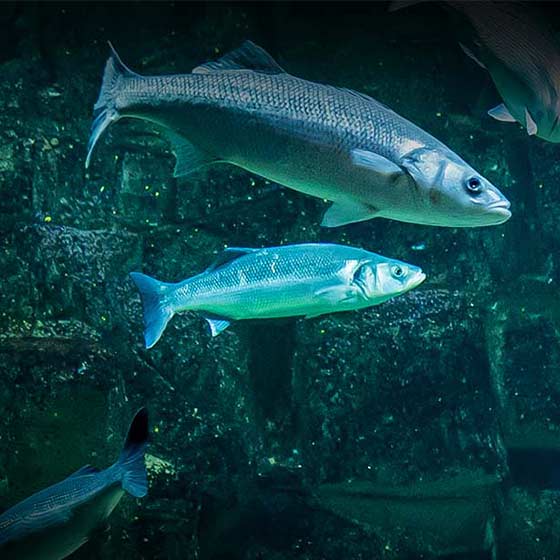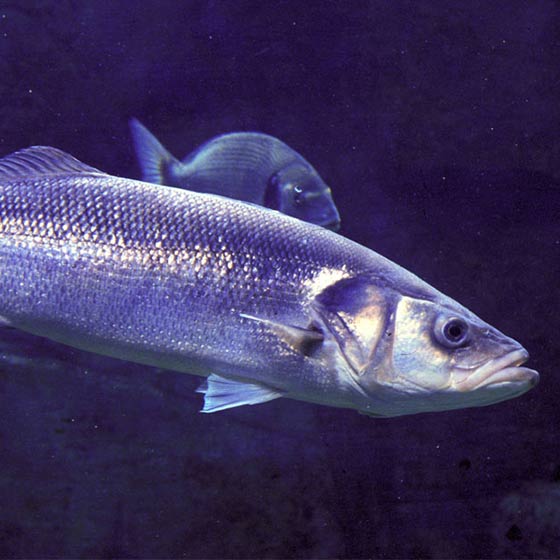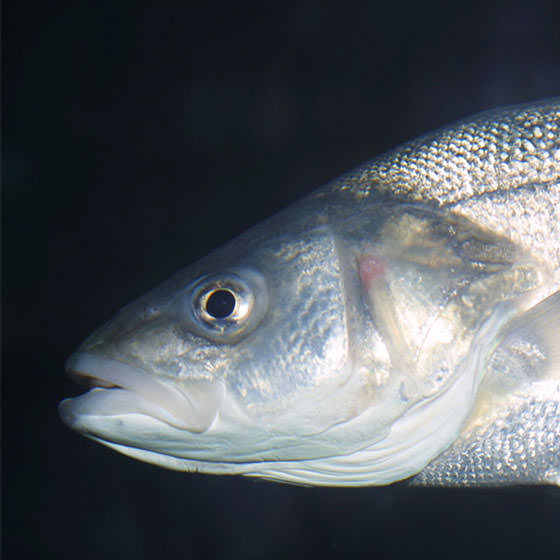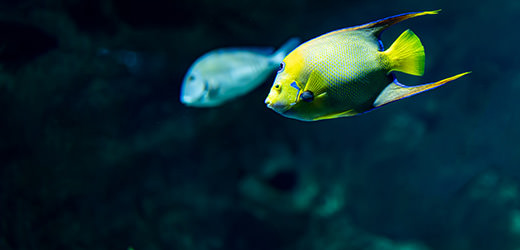Natural environment
The seabass is a fish with a preference for wave-battered coasts. It can mostly be found in surface water, up to 30 m in depth. It has a good tolerance for changes in salinity, which allows it to thrive in brackish water (estuaries, ports, salt ponds, etc.). Some specimens can grow to be up to 1 m long. The European seabass is gregarious, living in shoals from the end of its larval stage. It is not uncommon to see it mixing with other species of the same size.





